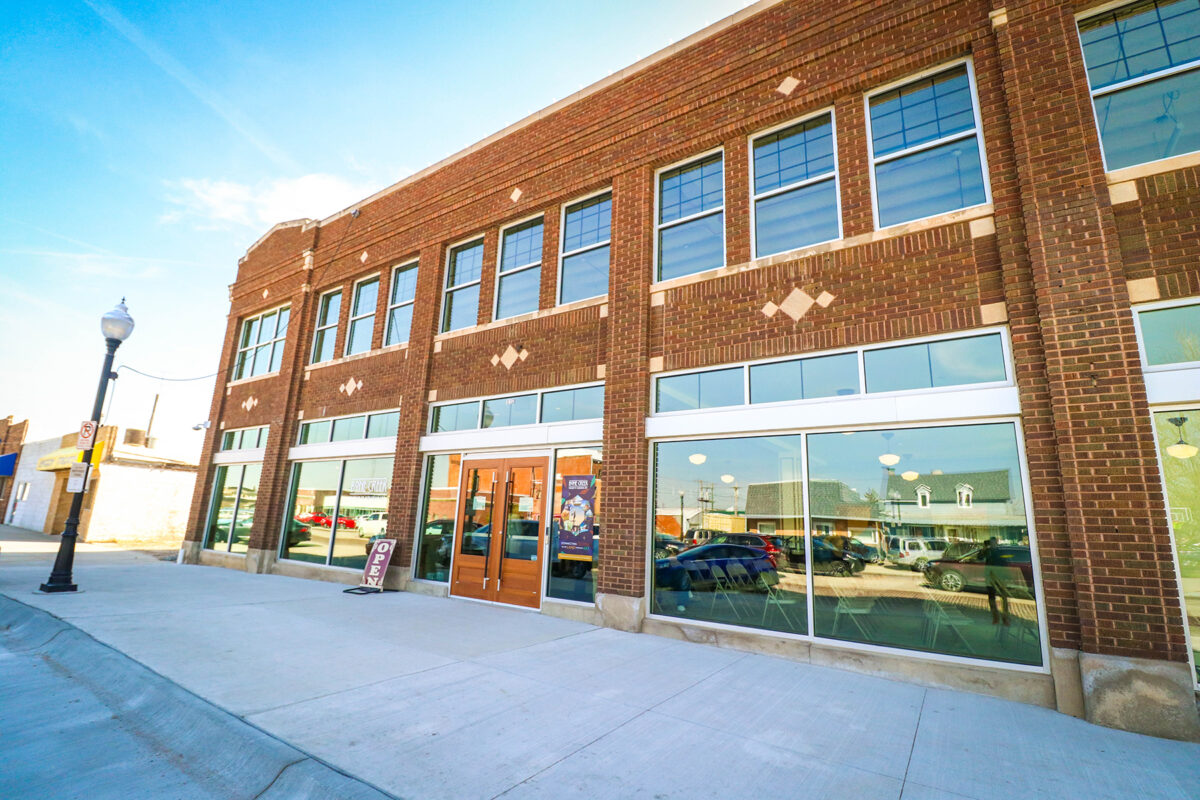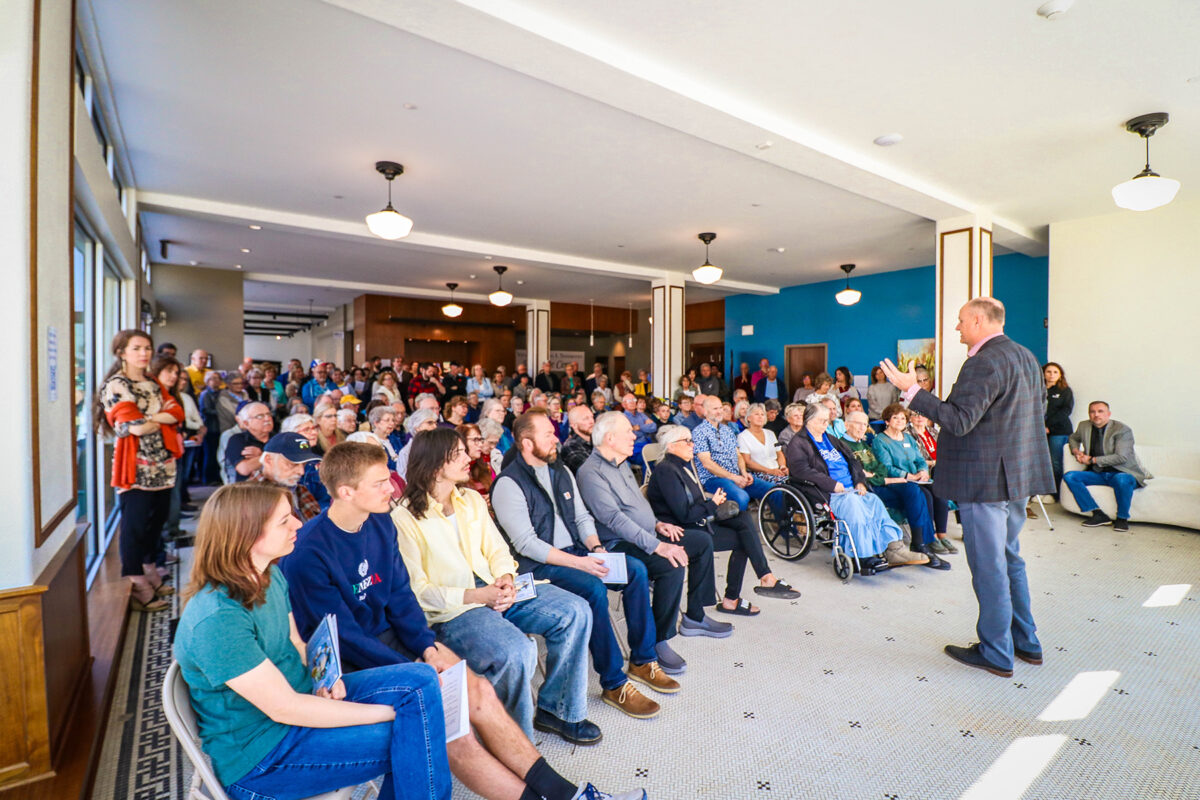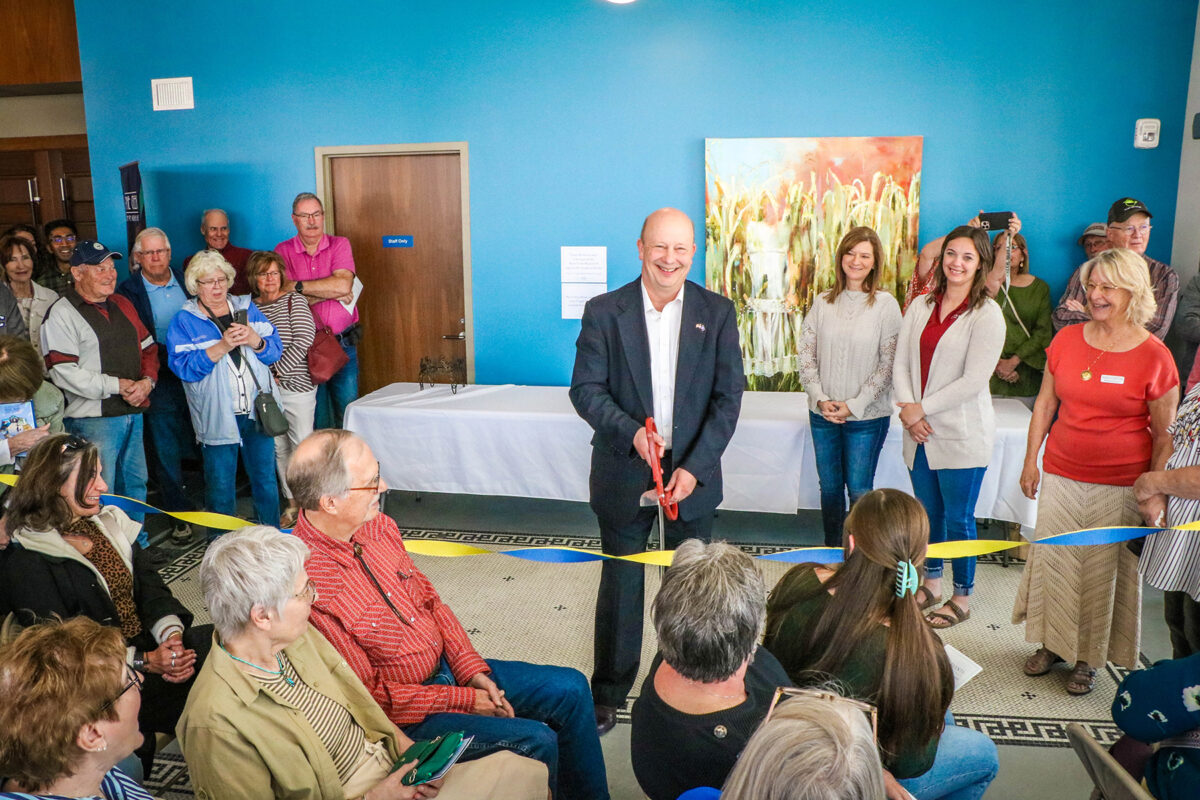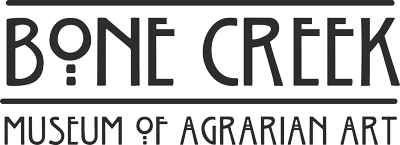April16, 2025
Bone Creek Museum of Agrarian Art of David City, Nebraska, was closed for only four short months to move from its original location to a newly renovated historic building at 312 North 5th Street. The grand reopening on Saturday, April 12, boasted a standing-room-only crowd in attendance gathered in the front multi-purpose room, which originally served as the vehicle showroom of the Ford Motor Co. assembly plant. There were 450 people present throughout the day’s festivities, which included a ribbon cutting by the Nebraska Department of Economic Development director, remarks by state senators, gallery tours, hands-on crafts, and a live painting demonstration by Texas artist V….Vaughan.

The morning’s program opened with brief remarks by the museum’s board president, Ruth Thoendel, who was also an integral part of the capital campaign leadership team. “We are so thankful to everyone who has helped make this possible,” she said. “Even with the success of our campaign, there are projects that we weren’t able to finance and we still need public support.” Architect Ryan Cameron of CMBA Architects of Des Moines commented that this project has been especially close of his heart because he is a native of David City and recognized many faces in the crowd.

Nebraska’s DED director, K.C. Belitz shared some celebratory remarks before cutting the ribbon. He said, Nebraskans so often have their heads down, working hard to accomplish their goals. When those goals are met, it’s important to pause and celebrate. Tomorrow we can get back to work, but today we celebrate, he said. Many museum patrons from out-of-state joined the local supporters to get a first glimpse at the new building and celebrate its completion.

Bone Creek Museum of Agrarian Art opened in 2008 with a specialized focus on art of the land. It is the only Agrarian Art museum in the nation. Remarks by guest speakers boasted the local pride of having the attraction as an asset to increase tourism. The museum serves as the cornerstone of Destination David, a creative district designated by the Nebraska Arts Council.
Expansion of the museum was a concept for 10 years, an active fundraising campaign for four years, and a construction project for less than 24 months. The project’s contractors received top awards from the Associated Builders and Contractors of Nebraska/South Dakota just this month in the Historical Renovation/Restoration category for projects under $25 million. Cheever’s renovation of the 1917 historic Ford Building was well under the competition’s category limit, at approx. $5 million. The team received two other awards for the execution and coordination of the HVAC system and the advanced lighting system.

The museum’s board of directors intentionally preserved some of this building’s interesting history. Grandfather of Joyce C. Hall (founder of Hallmark cards) owned the David City lots as a livery stable before selling to build the Ford dealership. The large brick building was an assembly plant and showroom for Model- T Ford automobiles. But like so many buildings in small towns, it had become vacant in recent decades and fallen into disrepair. Preserving a history of place is in keeping with the mission of the organization’s local founders. CMBA architects retained the historic design of the front lobby with the original tile floors, solid woodwork and period light fixtures. There is also a Ford automobile on permanent display in tribute to the building’s history. This particular 1923 Model-T was believed to have been the very first four-door model T sedan to have been assembled onsite and sold from the showroom.
Now the 1917 structure has been remodeled as a world-class art museum, preserving the character and charm that has grounded this corner of town, just off the city square, for more than 100 years. Some of the features of the new building include five galleries, two classrooms, and a small theatre. “There is no underestimating the impact of this building on the activities of the museum. We now have dedicated spaces for artist talks and receptions, proper spaces for receiving and storing the growing collection, and room to host in-house art workshops,” said collections manager Gabrielle Comte.
Bone Creek Museum of Agrarian Art’s mission is to connect people to the land through art. With each exhibition, Bone Creek Museum consistently captures a theme that is very challenging and compelling to the contemporary arts conversation. They have joined the conversation about farming, past, present and future, with creative expression that culminates in an emotional response from the viewer. The art becomes a tool for discussion and simultaneously a means to its own end. They are paving their own way forward to tell the timeless but unique stories of agriculture and Agrarian Art in America and across the world.

